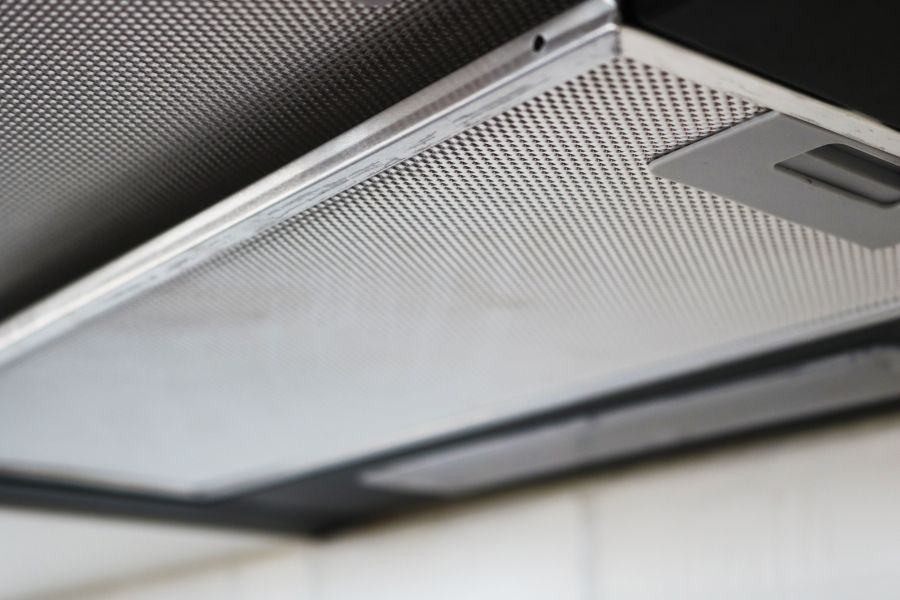A range hood is not only practical but it also can be added to aesthetically upgrade your kitchen. When it comes to this installation then, you can customize a range hood to your kitchen’s design and to your specifications.
You can choose a range hoods in various materials and styles, so you’ll have plenty of choices in making a selection. What’s more, you can pick wall-mount or island-mount styles and materials, such as copper, brass, or steel.
In addition, you can install inserts to custom range hoods that quiet the amount of noise when operating the system. You’ll need a range hood to keep your kitchen clean, as the smoky residue, after cooking, can linger on kitchen surfaces. With a range hood installed, you’ll also be able to breathe easier.
Custom Range Hoods: Measuring Air Flow
Remember, if your stovetop has more burners, you’ll need to install a range hood with more airflow capacity. When the airflow is just right, the hood can extract the hot air that rises from the stove and easily remove it from your kitchen. This also frees the air of excess humidity.
The airflow capacity equates to the ability of the fixture to remove air from the cooking space in a one-minute period. You measure it in cubic feet per minute (CFM). Therefore, the higher the CFM, the better – as far as airflow goes. The CFM should balance out with the hood’s BTUs (short for British thermal units), or the total heat output from the stove’s burners.
Plan on buying a range hood that provides 100 CFM of airflow for every 10,000 BTUs. When you customize the specs then, look for range hoods that feature 400 or more CFM. That will offer better coverage.
The Texture and Material of the Range Hood Design
One of the main features of your range hood is the material and texture. Artisan range hoods are hammered while stainless steel range hoods always feature a smooth surface. If you choose copper, you can get both smooth and hammered designs. Naturally, if you add rivets, straps, a crown, or pot rail, that will increase the price. Artisan range hoods are usually more expensive designs.
Sizing Your Range Hood
Remember that standard size is the size that fits the width of your stovetop. You may want to widen the range hood a bit, or if you add straps or rivets, they will add width to your range hood as well. When choosing a design then, you’ll need to consider these factors.
Choosing a Blower
What makes a range hood invaluable is its blower. So, you need to know something about the insert. This installation includes the range hoods’ filters and fans. Therefore, a range hood really is not a range hood without this device.
The blower is different from a range hood exhaust, as it manages the ventilation and filtration while the exhaust emits filtered air or pollutants. Range hoods may have blower installations that are added to the exterior walls of homes, inside the range hood itself, or inside the home, in an attic or basement.
While blowers installed inside a range hood may be noisier, you can add a part, as noted, that will quiet the noise. They are also easier to service.
Making a Range Hood Selection: A Brief Recap
When selecting a range hood, you’ll need to consider its design, the airflow capacity, the blower type, and exhaust. This is one item you’ll need to customize, as a range hood is meant to serve the needs of the kitchen for which it’s designed.
Related Posts: